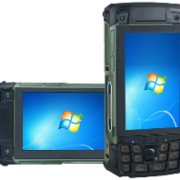Those who work in an engineering/hi-tech culture know the  importance of “specs.” Go to any biometric solution provider’ workplace, and you will see highly trained professionals closely examining the latest RFP, eagerly analyzing the specifications, as well as the Scope of Work.
importance of “specs.” Go to any biometric solution provider’ workplace, and you will see highly trained professionals closely examining the latest RFP, eagerly analyzing the specifications, as well as the Scope of Work.
Focusing on specifications alone can lead to not only tunnel vision, but also to a kind of passivity. We shouldn’t sit around waiting for the RFP to tell us what to do. We should go out into the field at every opportunity and seek input from end-users. That’s why AMREL is a fixture at events such as the Tactical Network Topology (TNT) and Biometrics Field Experiments (BFEX).
The significance of end-user input was reinforced for me at a biometric gathering, in which a government official from a Caribbean country inquired about AMREL’s handheld biometric solutions. Specifically, he wanted to know if a law officer needed to contact his home office in order to make an identification based on biometric information collected in the field.
At that time, I had been reading a great deal about the biometric problems occurring in Iraq and Afghanistan. Dependence on off-site databases was seriously slowing down the verification of non-combatants in the field. Even a small community could take hours to process. Not only did this annoy the locals, it exposed our soldiers to increased risk.
Armed with what I thought was relevant information, I gave the government official what I thought was the answer he wanted to hear. I assured him that we developed our handheld systems with the end-users in mind. While our platforms offered multiple options in communicating with off-site databases, they also had a huge capacity for storing NIST files. Our solutions enable verification of identities within minutes, often relying just on onboard memory.
The government official gravely shook his head. Contrary to my expectations, this was not what he wanted to hear. His wasn’t concerned about the speed of verification, but rather the possibility of corruption. If identities could be verified without contacting headquarters, this presented an opportunity for criminals to bribe the officers to let them go. As a check against corruption, the official felt it was imperative that all biometric identity verifications be processed through headquarters.
Is this the sort of thing that would be revealed in an RFP? Maybe. It is also possible that governments would not care to discuss the problem of corruption in an official document. Certainly, knowing the government official’s concerns will influence our future proposals and offerings.
As a result of frequently soliciting feedback from the biometric community, AMREL is developing biometric embedded systems. We expect to be making some exciting announcements soon.




